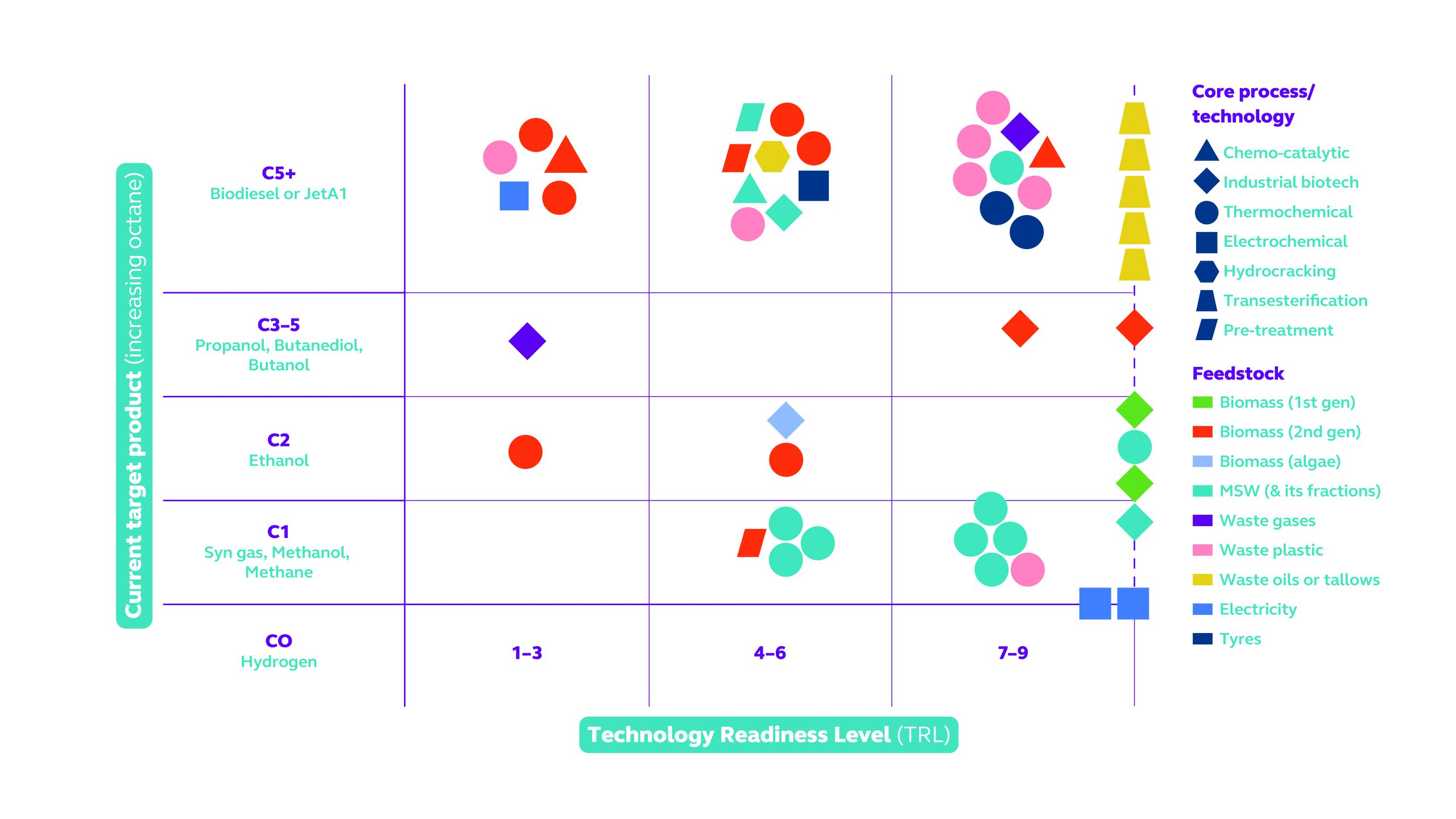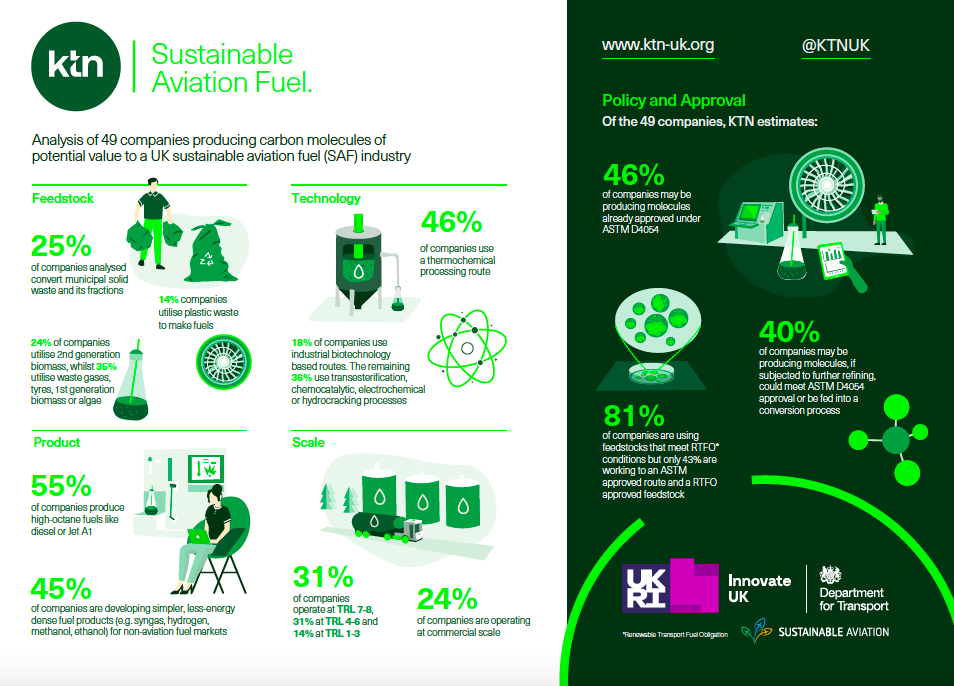Sustainable Aviation Fuel readiness analysis on sustainable chemical companies

KTN conducted an analysis on 49 UK companies that are known to be developing chemical processes to convert sustainable feedstocks into products with aviation fuel potential.
The analysis includes companies that are developing processes which target a range of fuels, not just SAF. Under the right market conditions and with the right policy incentives and technology partners, it may be attractive to convert their process to SAF production.
For each company, the following attribute was assessed:
- Feedstock utilised
- Conversion technology
- Type of carbon molecule (product) targeted
- Technology Readiness Level (TRL) they are operating at
- Whether the technology and feedstock are ASTM D4054 compliant
- Whether the feedstock meets DfT criteria to qualify for Renewable Transport Certificate (RTC) under the Renewable Transport Fuel Obligation (RTFO)

Click here to download the full-size matrix graphic.
The following infographic breaks down the feedstock, technology, product and scale of production, as well as identifying the companies with the highest potential to produce a commercially viable aviation fuel. (Click here to download it in PDF format.)

Next Steps
The analysis indicates that there is a strong cohort of innovators in the UK operating between TRL 3 and 8, and will therefore require investment and policy certainty to develop SAF. These organisations would also benefit from collaborations with supply chain partners that can help bring their technology and products to market quicker.
Those organisations that are already developing a process that would be eligible under RTFO, and under one of the existing ASTM Annexes, are particularly attractive owing to the (potentially) quicker route to market as a drop-in fuel, and with higher probability of meeting ASTM requirements.
Important note:
The analysis is by no means exhaustive, and is focused on the 49 companies that KTN is aware of, and a work in progress.
Authors:
Peter Clark, Head of Chemistry & Industrial Biotechnology
Michelle Carter, Head of Transport
Acknowledgement:
Chris Lewis Fuels Consultancy for input on the ASTM compliance.

